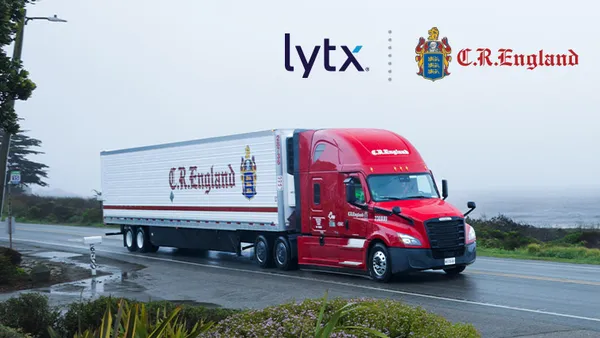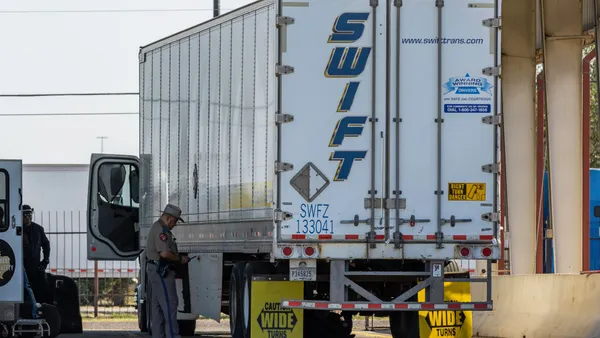Dive Brief:
- Sysco opened its first driver academy during the previous quarter, CEO Kevin Hourican said during a recent earnings call. He announced the company's plan to open the Sysco Driver Academy program during a call in August.
- Hourican said the company is "bullish" on expanding the academy across the country next year in attempts to bolster its driver pipeline.
- "The most important population for us is our driver population. It's a highly skilled job," Hourican said. But he admitted the company is trying to boost its lower-than-typical retention rates. Retention bonuses for drivers have had "a noticeable and visible positive impact on retention," Hourican said.
Dive Insight:
Multiple fleets have pledged investment in their training academies to boost their workforces, as driver issues once again topped the trucking industry's concerns this year, according to the American Transportation Research Institute.
"We plan to be ahead of the recovery curve, not catching up," Sysco Chief Financial Officer Aaron Alt said on an earnings call in February, talking about bulking the company's workforce.
In October, Sysco held its first-ever nationwide hiring event, Hourican said. That's in addition to social media and other marketing pushes for recruitment purposes. Those and other efforts led to more than 1,000 new hires, he added, which includes warehouse workers and other supply chain professionals.
Yellow also has endeavored on a hiring push, having participated in 127 hiring events and 14 job fairs this year, as of Nov. 3. It, too, is placing emphasis on its CDL schools as part of recruitment.
"Our 16 Driver Academy sites were fully utilized in Q3 with a record number of participants in the program," Darrel Harris, president of Yellow, said in a recent earnings call.
But recruitment is only half of the story. Once fleets get workers through the door, the next area of focus is to encourage them to stay. Driver retention jumped from sixth position of ATRI's top fleet concerns in 2020 to No. 2 in 2021. Turnover numbers are creeping back up.
Driver turnover increased from 45.8% in Q2 to 51.5% in Q3, according to Stay Metrics. But that's still below the turnover numbers from Q4 2019 and Q1 2020, which were 67.1% and 68.7%, respectively.
"We are spending an extensive amount of time on improving retention. Retention is lower than historical run rate averages, ... but it's getting better as we are putting even more focus on retention," Hourican said.
Overtime is one factor hurting retention, he added, speaking generally about Sysco's workforce. The company is "providing our associates too much overtime, daily," Hourican said. Bolstering staffing levels will allow Sysco to cut overtime back to normal levels, which would, in turn, boost retention.
One recruitment tactic on which many businesses are focusing is diversity. In 2019, about 10% of the OTR driver population was made of women, according to the Women in Trucking Association. Ellen Voie, president of WIT, told Transport Dive last year that about 77% of long-haul drivers were White.
Attracting workers from groups currently underrepresented in the trucking industry is a goal for many executives. Those populations represent largely untapped talent pools, and owning a driver-training network can help bring them into the fold.
"With the growing need for skilled labor in our country, we intend to be on the forefront to attract talented individuals that may have never worked in trucking, including women, minorities, and younger people," Harris said.
At the American Trucking Associations' Management Conference & Exhibition, President and CEO of Trailiner Amber Edmondson spoke about expanding "outside of our trucking bubble" to appeal to workers headed for different industries that directly compete with transport for labor.












